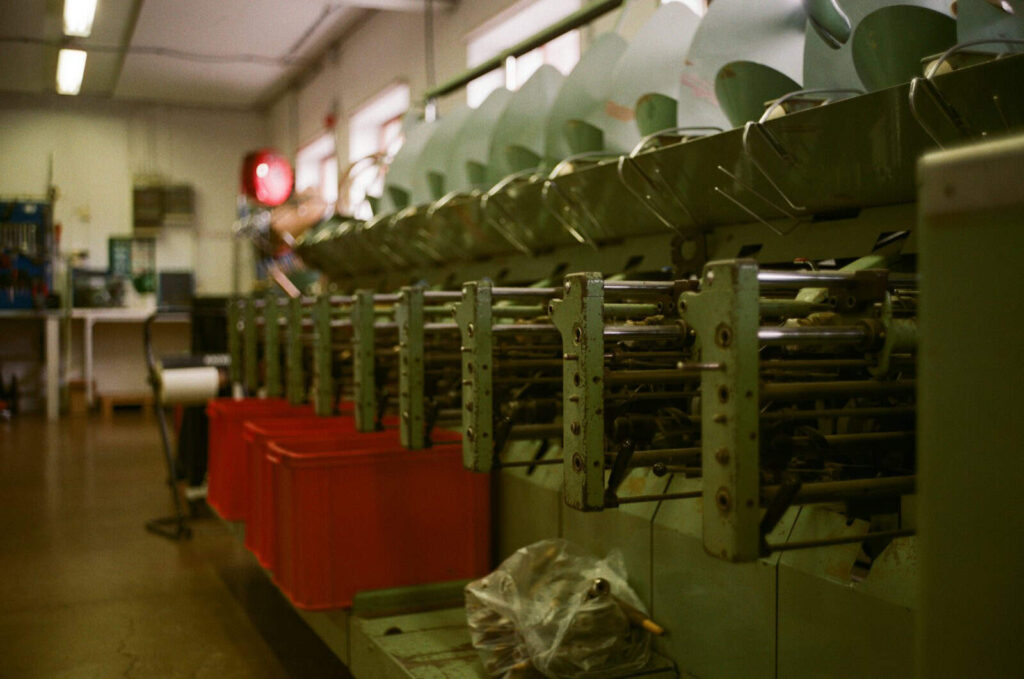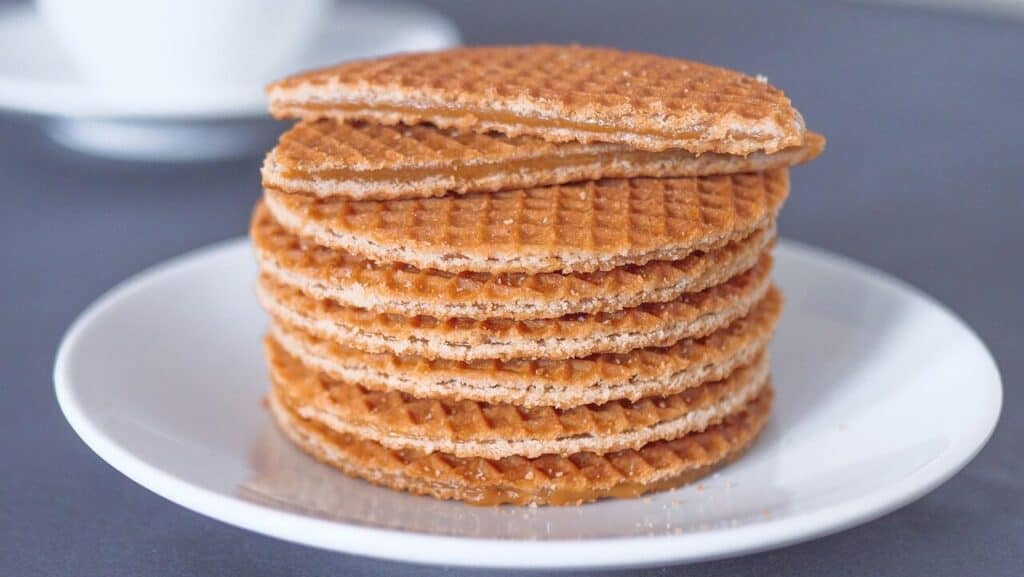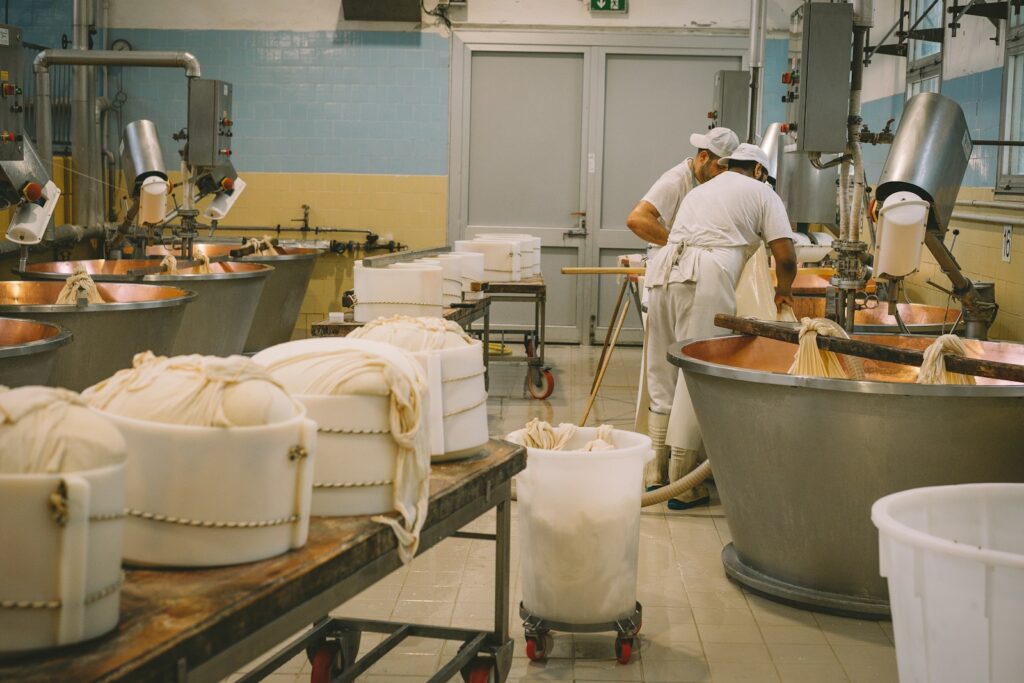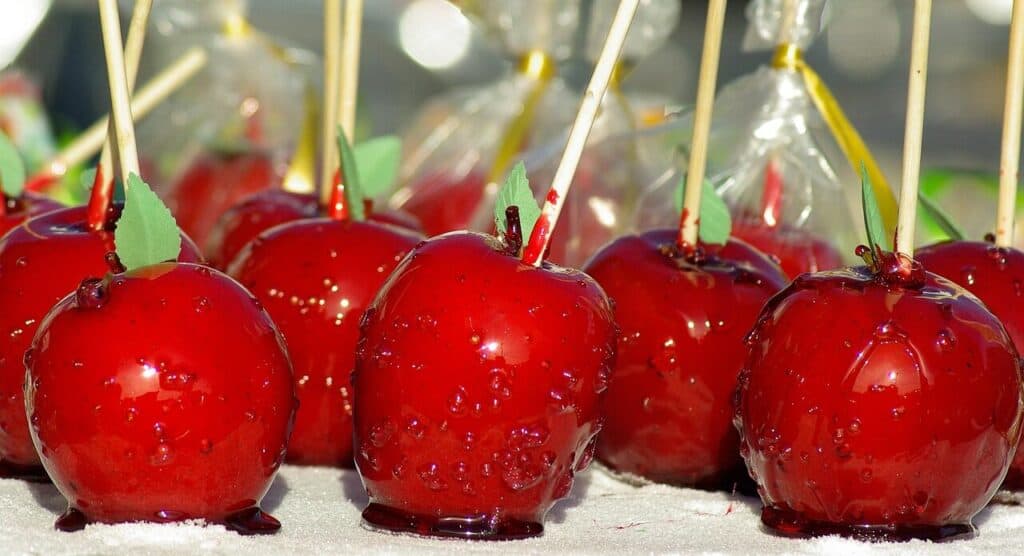La science du caramel parfait : Une analyse technique du processus de production
Introduction
Pour obtenir un caramel parfait, il ne s'agit pas d'avoir une recette secrète. Il s'agit de contrôler avec précision des réactions chimiques clés et des changements physiques. Le processus s'apparente à la direction d'un orchestre de chimie. De petits changements de température ou de temps peuvent transformer complètement le produit final.
Voici l'essentiel : un caramel exceptionnel est le résultat de l'équilibre entre deux processus fondamentaux. Il s'agit de la réaction de Maillard et de la caramélisation. Ensemble, ils créent la saveur, l'arôme et la couleur qui font la spécificité des bonbons de haute qualité. Les comprendre n'est pas facultatif : c'est la base d'un succès constant.
Cet article examine ces principes en profondeur, sur la base de données scientifiques. Nous commencerons par la chimie de base qui sous-tend le développement des arômes. Nous examinerons ensuite le rôle de chaque ingrédient. Nous fournirons un guide technique du processus et d'explorer des sujets avancés en matière de texture. Enfin, nous vous fournirons un guide systématique pour résoudre les problèmes de production les plus courants.
Chimie fondamentale du caramel
Le rôle de la caramélisation
La caramélisation se produit lorsque les sucres se décomposent sous l'effet de la chaleur. Elle se produit lorsque les acides aminés sont pratiquement absents. La chaleur seule est à l'origine de ce processus.
Tout d'abord, le saccharose se décompose en ses éléments constitutifs : le glucose et le fructose. C'est ce qu'on appelle l'inversion. À mesure que le chauffage se poursuit, ces sucres simples subissent des réactions complexes de déshydratation et de liaison. Des centaines de nouveaux composés sont ainsi créés. Parmi ceux-ci, on trouve les furanes odorants et le maltol savoureux.
La caramélisation donne au caramel sa couleur brune profonde. Elle crée les notes caractéristiques de noisette, de beurre et de légère amertume du caramel bien cuit. Ce caramel Le processus nécessite une chaleur élevée pour fonctionner à un taux significatif.
La réaction de Maillard
La réaction de Maillard est différente. Elle implique des acides aminés qui réagissent avec des sucres réducteurs. Dans la production de caramel, les acides aminés proviennent des solides du lait. Les sucres réducteurs comprennent le lactose du lait et tout glucose ou fructose ajouté.
Il ne s'agit pas d'un simple brunissement du sucre. Il s'agit d'une chaîne complexe de réactions qui crée une énorme variété de composés aromatiques et gustatifs. Ces molécules confèrent au caramel ses notes torréfiées, savoureuses et complexes. C'est ce qui différencie le caramel du simple caramel dur.
La réaction de Maillard confère au caramel sa richesse et sa complexité. Elle crée une profondeur presque charnue qu'il est impossible d'obtenir uniquement avec du sucre et de la chaleur.
Interaction des réactions
Dans la production de caramel, les deux réactions se produisent en même temps. Mais leur importance change à mesure que la température augmente. L'équilibre entre ces deux réactions détermine le profil aromatique final.
La réaction de Maillard commence à s'accélérer à des températures plus basses, généralement autour de 140 °C (284 °F). Sa contribution augmente régulièrement. Elle développe des notes salées et torréfiées au fur et à mesure de la cuisson.
Une caramélisation importante nécessite des températures plus élevées. Elle devient très active à partir de 160°C (320°F). Pousser le caramel dans cette fourchette permet de développer des saveurs plus profondes et plus nobles. Mais cela introduit également de l'amertume. L'art de la confiserie consiste à s'arrêter au moment exact où ces réactions ont créé l'équilibre souhaité entre la saveur, la couleur et l'arôme.
Analyse fonctionnelle des ingrédients
Les sucres comme colonne vertébrale
Les sucres constituent la structure de base et le goût sucré du caramel. Le saccharose, ou sucre de table commun, est le principal composant. Il fournit la majeure partie de la structure solide et est le principal combustible pour la caramélisation.
Cependant, l'utilisation du saccharose seul entraîne un risque élevé de cristallisation indésirable. Il en résulte une texture granuleuse. Pour éviter cela, nous ajoutons des "agents de raclage" comme le sirop de glucose ou le sirop de maïs.
Ces sirops contiennent des sucres invertis (glucose et fructose) et d'autres hydrates de carbone complexes. Ils interfèrent physiquement avec l'arrangement ordonné des molécules de saccharose. Cela empêche la formation de gros cristaux de sucre. Le caramel final présente ainsi une texture lisse, semblable à celle du verre, plutôt qu'une texture sablonneuse.
Graisses pour la sensation en bouche
Les matières grasses sont essentielles à la sensation en bouche luxueuse du caramel, à la diffusion des arômes et aux propriétés de manipulation. Le beurre non salé est le choix traditionnel et souvent le meilleur.
Le beurre apporte plus que de la matière grasse. Sa matière grasse apporte une richesse inégalée et une sensation crémeuse en bouche. Les solides du lait (protéines et lactose) sont essentiels à la réaction de Maillard. Ils contribuent de manière significative à la saveur et à la couleur. La teneur en eau du beurre, qui est généralement de 15-18%, est également cruciale. Dans un premier temps, elle dissout les sucres et forme une émulsion stable.
D'autres graisses peuvent être utilisées, mais elles modifient fondamentalement le produit final. La margarine peut permettre de réaliser des économies et d'assurer la stabilité de l'émulsion. Mais elle crée souvent une sensation cireuse en bouche et ne contient pas les solides du lait nécessaires au brunissement profond de Maillard. L'huile de coco peut créer un "snap" très dur et convient aux formulations végétaliennes. Mais son profil de saveur est distinct et manque de la richesse classique des produits laitiers.
Fonctionnalité | Beurre non salé | Margarine | Huile de noix de coco |
Contribution primaire | Saveur riche, solides du lait pour Maillard | Stabilité de l'émulsion, rentabilité | Cliquetis dur, saveur distincte |
Matières sèches du lait | Oui (contribue au brunissement) | Non (ou très faible) | Non |
Teneur en eau | ~15-18% (Affecte le temps de cuisson) | Variable (peut être plus élevé) | 0% |
Sensation en bouche | Crémeux, riche | Peut être cireux ou huileux | Propre, à fusion rapide |
Meilleur pour | Saveur classique de haute qualité | Production en grande quantité, sensible aux coûts | Caramel végétalien, profils de saveurs spécifiques |
Les produits laitiers comme carburant de Maillard
Les composants laitiers sont la principale source de protéines et de sucres réducteurs qui alimentent la réaction de Maillard.
Le lait frais ou la crème fraîche contient de l'eau, de la graisse, du lactose (un sucre réducteur) et des protéines de caséine et de lactosérum (source d'acides aminés). Le rapport entre la matière grasse et l'eau dans la crème et le lait influe sur l'émulsion initiale et la richesse finale.
Le lait concentré sucré est un puissant accélérateur de la production de caramel. Il est préconcentré et contient des niveaux élevés de sucre et de solides de lait. Ses protéines ont déjà subi un traitement thermique. Elles sont donc plus aptes à participer à la réaction de Maillard. Cela permet de raccourcir les temps de cuisson et de développer plus rapidement des saveurs profondes et complexes.
Émulsifiants et additifs
Au-delà des composants de base, certains additifs jouent un rôle technique essentiel. Un émulsifiant est souvent indispensable pour les formulations à grande échelle ou riches en matières grasses.
La lécithine, généralement issue du soja ou du tournesol, est un émulsifiant très efficace. Sa structure moléculaire comporte à la fois une partie qui aime l'eau et une partie qui aime les graisses. Cela lui permet de se situer à l'interface entre l'eau et les graisses. sirop de sucre et fondu la matière grasse. Elle crée et maintient une émulsion stable et empêche le caramel de devenir huileux ou de se "casser".
Le sel est un autre additif essentiel. Bien qu'il apporte son propre goût, son rôle principal est de rehausser et d'arrondir les autres saveurs développées au cours de la cuisson. Il équilibre habilement le goût sucré intense. Il met en valeur les notes complexes des réactions de Maillard et de caramélisation.
Maîtriser le contrôle des processus
L'étape de l'émulsification
La production de caramel commence par la création d'une émulsion stable. Cette étape initiale consiste à faire fondre doucement le beurre et à dissoudre les sucres dans l'eau disponible provenant du beurre et de tout produit laitier ajouté.
Nous créons une émulsion eau dans l'huile. Des gouttelettes microscopiques de sirop de sucre sont dispersées dans la phase continue de matière grasse liquide. Il est essentiel d'obtenir une émulsion stable dès le départ.
Si cette étape n'est pas respectée, le mélange se "casse". La graisse se sépare du sirop de sucre. Ce phénomène peut être dû à un chauffage trop rapide, à un mélange initial insuffisant ou à un mauvais rapport entre l'eau et la graisse. Une émulsion brisée est difficile à récupérer. Le produit final sera gras et séparé. Il est essentiel de remuer constamment et délicatement pendant cette phase.
La courbe de chauffe critique
Une fois qu'une émulsion stable est formée, la phase critique de chauffage commence. À mesure que la température du mélange augmente, l'eau s'évapore et la concentration en sucre augmente. Cette progression à travers les différents stades de sucre est au cœur de la fabrication du caramel. Chaque étape correspond à une texture finale et à un profil de saveur spécifiques. Le contrôle précis de la température n'est pas négociable.
Nous suivons ce parcours à l'aide d'un thermomètre numérique étalonné. Mais nous nous fions également à des indices physiques et visuels qui signalent les changements chimiques sous-jacents. Le mélange s'épaissit. La couleur passe du crème pâle à l'ambre riche au fur et à mesure que les réactions de Maillard et de caramélisation s'accélèrent. Observez la brillance du mélange. Un ternissement soudain peut indiquer une cristallisation prématurée - un signe d'alerte critique.
Le stade de la craquelure dure est la cible du caramel cassant classique. À ce stade, la teneur en eau est extrêmement faible (environ 1%). Le sucre a formé une solution amorphe sursaturée, prête à être refroidie dans un verre.
Nom de scène | Plage de température (°F / °C) | Description physique | Le processus chimique domine |
Balle molle | 235-245°F / 112-116°C | Forme une boule souple et flexible dans l'eau froide. | Evaporation, augmentation de la concentration en sucre. |
Boule de fer | 245-250°F / 118-120°C | Forme une boule ferme, encore malléable. | La réaction de Maillard commence à s'accélérer. |
Balle dure | 250-266°F / 121-130°C | Forme une boule dure, difficile à déformer. | Réaction de Maillard importante, la couleur s'intensifie. |
Fissure douce | 270-290°F / 132-143°C | Se sépare en fils durs mais non cassants. | Maillard intense, début de caramélisation. |
Fissure dure | 295-310°F / 146-154°C | Fils très fragiles, stade classique du caramel. | La caramélisation est désormais très active. |
La phase critique de refroidissement
Une fois la température cible atteinte, le processus de cuisson doit être arrêté immédiatement et avec précision. La phase de refroidissement est tout aussi critique que la phase de chauffage. C'est là que la texture finale est figée.
Lorsque la température cible est atteinte, toute agitation doit cesser. L'agitation de la solution sucrée sursaturée en cours de refroidissement provoque la cristallisation. Ce processus est appelé "ensemencement". Un seul cristal de sucre égaré peut déclencher une réaction en chaîne. Il peut transformer l'ensemble du lot d'un verre lisse et clair en une masse granuleuse et trouble.
Le caramel chaud doit être versé immédiatement sur une surface froide et non réactive. Une plaque de marbre est traditionnelle et idéale en raison de sa masse thermique élevée. Elle évacue la chaleur du caramel rapidement et uniformément. Les tapis en silicone de qualité alimentaire constituent une alternative moderne et pratique. Ils permettent également un excellent transfert de chaleur et un démoulage facile. Ce refroidissement rapide est essentiel pour "geler" les molécules de sucre dans leur état désordonné et amorphe. Cela les empêche de s'organiser en un réseau cristallin.
Rhéologie et cristallisation
Le caramel en tant que solide amorphe
La texture souhaitée du caramel classique est celle d'un "verre". D'un point de vue scientifique, il s'agit d'un solide amorphe. Il s'agit d'un état de la matière dans lequel les molécules n'ont pas l'ordre à longue portée d'un solide cristallin.
Un solide cristallin, comme un morceau de sucre, est un mur de briques bien ordonné. Un solide amorphe, comme une vitre, a les mêmes composants. Mais ils sont figés dans un arrangement désordonné et aléatoire. C'est cette absence de réseau cristallin qui confère au caramel son "craquement" cassant caractéristique et sa douceur en bouche.
Nous atteignons cet état par un refroidissement rapide. En abaissant rapidement la température du sirop de sucre hautement concentré, nous privons les molécules de saccharose du temps et de l'énergie dont elles ont besoin pour s'aligner dans une structure cristalline ordonnée. L'épaisseur du mélange augmente considérablement jusqu'à ce qu'il devienne effectivement solide. Les molécules sont ainsi piégées dans leur état désordonné de liquide.
Contrôle de la viscosité dans la cuisson
La viscosité, ou résistance à l'écoulement, est une propriété physique essentielle qui change radicalement au cours de la production de caramel. À mesure que l'eau s'évapore et que la concentration en sucre augmente, l'épaisseur du sirop augmente de façon exponentielle.
Cette augmentation de l'épaisseur a plusieurs effets. Elle rend le transfert de chaleur moins efficace. Il faut donc remuer constamment pour éviter les brûlures localisées au fond de la marmite.
En outre, l'épaisseur élevée emprisonne la vapeur et d'autres composés volatils générés lors des réactions de Maillard et de caramélisation. Cela contribue à la porosité finale et à la texture du caramel. Le contrôle de la vitesse de chauffage permet une augmentation plus contrôlée de l'épaisseur. Cela permet d'obtenir un produit final plus homogène.
Facteurs de dureté finale
La dureté finale, ou "snap", du caramel est déterminée par plusieurs facteurs liés entre eux. Le facteur le plus important est la température de cuisson finale. Une température plus élevée signifie qu'il reste moins d'eau et que la solution sucrée est plus concentrée. Le produit final est donc plus dur.
Le rapport entre le saccharose et les sucres invertis est également crucial. Comme nous l'avons vu, les sucres invertis provenant du sirop de maïs ou de glucose empêchent la cristallisation. Ils ont également un effet adoucissant. Une proportion plus élevée de sucres invertis permet d'obtenir un caramel plus doux et légèrement plus souple, même à température égale.
Enfin, les matières solides non sucrées jouent un rôle. Les protéines et les matières grasses des solides du lait interfèrent physiquement avec la formation d'un verre à sucre parfait réseau. Cela permet d'adoucir subtilement la texture et d'éviter que le caramel ne soit trop dur ou tranchant. Cela contribue à rendre la dégustation plus agréable.
Guide de dépannage technique
Un diagnostic systématique
Lorsqu'un lot de caramels échoue, ce n'est pas par malchance. Il est dû à une défaillance spécifique et identifiable du contrôle du processus ou de la fonction de l'ingrédient. Une approche systématique du diagnostic consiste à relier le défaut observable à sa cause scientifique.
En comprenant la chimie et la physique en jeu, nous pouvons passer de la simple mise au rebut d'un lot défaillant à la compréhension des raisons de cette défaillance. Cette connaissance permet de prendre des mesures correctives ciblées. Elle permet d'éviter que la même erreur ne se reproduise. Le guide suivant fournit un cadre pour ce processus de diagnostic.
Guide des défaillances courantes
Cette matrice décrit les défauts courants, leurs causes scientifiques probables et les actions spécifiques nécessaires pour les corriger dans les lots futurs. Utilisez-la comme un outil pour affiner votre processus et obtenir des résultats cohérents et de haute qualité.
Défaut | Symptôme observable | Cause scientifique probable | Action corrective / Prévention |
Texture granuleuse ou sucrée | Sableux, pas lisse sur la langue. Aspect terne. | Cristallisation prématurée ou incontrôlée du saccharose. | Ne pas remuer après ~250°F (121°C). S'assurer que le "doctoring agent" (sirop de maïs) est correctement mesuré. Nettoyer les parois du pot à l'aide d'une brosse humide. |
Caramel séparé ou huileux | Mares d'huile à la surface ; sensation de gras. | L'émulsion sucre/graisse est "cassée". | Ajouter une petite quantité d'eau chaude et fouetter vigoureusement pour réémulsionner. À l'avenir, utiliser un émulsifiant (lécithine) et veiller à chauffer progressivement et uniformément. |
Le caramel est trop mou / moelleux | Ne craque pas lorsqu'il est refroidi, il se plie plutôt. | La température de cuisson finale est trop basse. La teneur en eau est trop élevée. | Le lot ne peut pas être fixé. Pour le lot suivant, cuire à une température finale plus élevée (stade Hard-Crack). Calibrez votre thermomètre. |
Le caramel est trop dur / cassant | Se brise facilement, peut être coupant. | La température de cuisson finale était trop élevée. | Le lot ne peut pas être réparé. Pour le lot suivant, retirer de la chaleur à une température plus basse dans la gamme Hard-Crack. |
Saveur brûlée ou amère | Goût âcre et brûlé, couleur trop foncée. | Chauffage inégal ou mélange non brassé provoquant des brûlures localisées. | Utiliser une casserole à fond épais pour une répartition uniforme de la chaleur. Remuer constamment et soigneusement. Réduire le feu si le brunissement est trop rapide. |
Conclusion : De la science à l'art
Rappel des principes clés
La production d'un caramel parfait est un témoignage de la science appliquée. Nous avons vu que le succès dépend de la gestion précise des principes fondamentaux. Il faut un profond respect pour les rôles de la réaction de Maillard et de la caramélisation dans la création d'une saveur complexe.
Le succès exige également un contrôle strict de l'état physique du sucre. Il s'agit d'empêcher la cristallisation indésirable en utilisant des agents de raclage et en procédant à une manipulation soigneuse. Enfin, il faut créer et maintenir une émulsion stable de graisse et de sirop pour obtenir la riche sensation en bouche souhaitée. La maîtrise de ces piliers transforme le processus d'un jeu de devinettes en une technique reproductible.
La synthèse de l'artisanat
Si l'ensemble du processus est ancré dans la chimie et la physique, c'est en appliquant ces principes que l'artisanat et l'art apparaissent. La science fournit le cadre, mais c'est le confiseur qui donne l'intention. Décider du moment exact où il faut arrêter la cuisson pour obtenir un équilibre spécifique entre les notes torréfiées de Maillard et les tons de caramel aux noix est un choix artistique. Mais il s'appuie sur des connaissances scientifiques.
Un mot de la fin qui donne du pouvoir
Nous vous encourageons à considérer ces connaissances techniques non pas comme un ensemble de règles rigides, mais comme une puissante boîte à outils. Utilisez cette compréhension de la science sous-jacente pour expérimenter en toute confiance. Ajustez les ratios d'ingrédients. Explorez différentes sources de produits laitiers. Manipulez les temps de cuisson et les températures de manière ciblée. En maîtrisant la science, vous libérez la liberté de créer un caramel qui n'est pas seulement techniquement parfait. Il est aussi unique en son genre.
- Wikipedia - Réaction de Maillard https://en.wikipedia.org/wiki/Maillard_reaction
- Wikipedia - Fabrication de bonbons https://en.wikipedia.org/wiki/Candy_making
- ScienceDirect - Aperçu de la réaction de Maillard https://www.sciencedirect.com/topics/agricultural-and-biological-sciences/maillard-reaction
- PMC (PubMed Central) - Transformation des aliments et produits de la réaction de Maillard https://pmc.ncbi.nlm.nih.gov/articles/PMC4745522/
- ACS Publications - Contrôle des réactions de Maillard dans les aliments https://pubs.acs.org/doi/10.1021/acs.jafc.7b00882
- Exploratorium - La science de la cuisine : Les étapes de la fabrication des bonbons https://www.exploratorium.edu/explore/cooking/candy-making-stages
- PubMed - Brunissement et pigmentation des aliments par la réaction de Maillard https://pubmed.ncbi.nlm.nih.gov/32910400/
- Cuisine moderniste - La réaction de Maillard https://modernistcuisine.com/mc/the-maillard-reaction/
- PMC (PubMed Central) - Aperçu de la saveur des produits de la réaction de Maillard https://pmc.ncbi.nlm.nih.gov/articles/PMC9511141/
- Institut de Science et Technologie des Aliments (IFST) - Glucides : Caramélisation https://www.ifst.org/lovefoodlovescience/resources/carbohydrates-caramelisation









